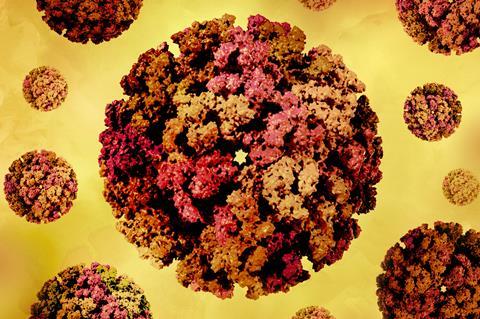Chikungunya virus has caused substantial epidemics in the tropics, often with an even worse impact than dengue, but infections can also be relatively mild or even undetected.

A study conducted in Brazil by researchers at the São José do Rio Preto Medical School (FAMERP) in São Paulo State shows that the virus has circulated in the city silently for years. The number of cases was initially small but gradually rose in the period analyzed (2015-19). The findings underscore the importance of epidemiological surveillance to predict and prevent epidemics.
“Cryptic [undetected] circulation of chikungunya can precede massive epidemics, with exposure of a large proportion of the population and a major impact on public health and people’s lives. The results of our study therefore reinforce the need for more epidemiological studies, genomics, monitoring of mosquitoes and epidemiological surveillance, so that we can be well-prepared for a chikungunya epidemic,” said Maurício Lacerda Nogueira, a professor at FAMERP and last author of the article reporting the study, published in the journal PLOS Neglected Tropical Diseases.
Serious consequences
Nogueira stressed that the new circulation profile identified in the study does not minimize the potential threat to public health posed by chikungunya. “Chikungunya continues to require the organization of a health network to provide care for people with a disease that can have serious consequences. The chronic phase, during which the main symptom is joint pain, is highly incapacitating and can persist for years. Furthermore, the risk of future epidemics remains high, although we’ve discovered that they can be more predictable,” he told Agência FAPESP.
The study, which was supported by FAPESP, monitored 341 residents of Vila Toninho, a neighborhood of São José do Rio Preto, for four years. It was part of a Thematic Project, also supported by FAPESP, which involved surveillance of dengue, zika and chikungunya infections in the city by means of blood sample analysis. The researchers also used official data on the presence of the virus in mosquitoes.
Silent circulation
According to the data provided by the municipal government, only 41 cases of chikungunya were confirmed in the period in São José do Rio Preto, which has some 470,000 inhabitants. However, analysis of the blood samples collected for the FAMERP study conducted in the same period showed that the number of chikungunya cases in proportion to the population (seroprevalence) rose from 0.35% in 2015 to 2.3% in 2019.
The researchers also analyzed 497 blood samples collected from individuals with suspected dengue during the 2019 outbreak in the city, finding that 4.4% had the virus or had recently been infected (IgM positive), and 8.6% had been exposed to the antigen at some time (IgG positive).
“We wanted to understand why a major chikungunya epidemic hadn’t yet occurred in the city when we knew the virus was circulating there. We discovered that the number of infections was not as large as elsewhere and that the disease is extremely under-reported, both because of the high rate of asymptomatic case, as our study showed, and because chikungunya is easily misdiagnosed as dengue,” he said.
Acute phase
Nogueira explained that the symptoms of both diseases are very similar in the acute phase, being mainly high fever, fatigue, body pain and dehydration, although pain behind the eyes is peculiar to dengue.
The joint pain caused by chikungunya ranges from mild arthralgia (joint stiffness without inflammation) to debilitatingly intense polyarthritis (when four or more joints in the body are painful and inflamed), which can last months or even years. Asymptomatic infections can reach 25% of cases, according to previous research.
Chikungunya virus was introduced to the Americas in 2013, initially causing major epidemics in several countries of Central America and the Caribbean. More than 900,000 cases were confirmed in Brazil between then and 2020.
In Brazil, chikungunya was detected by laboratory methods in 2014 in Amapá state (North region) and Bahia state (Northeast region). The virus spread widely in 2023, and all states in Brazil currently have reports of its transmission.
“It’s a big mistake to assume that an epidemic will be the same in every country. We’ve studied cases of epidemics in Asia, including islands like Singapore. Perhaps owing to its large size, Brazil has several arboviruses in circulation at any one time, so the trends are more complex and harder to analyze. Any epidemic may involve several viruses concomitantly. Again, all this underscores the importance of strong disease surveillance,” Nogueira said.




No comments yet